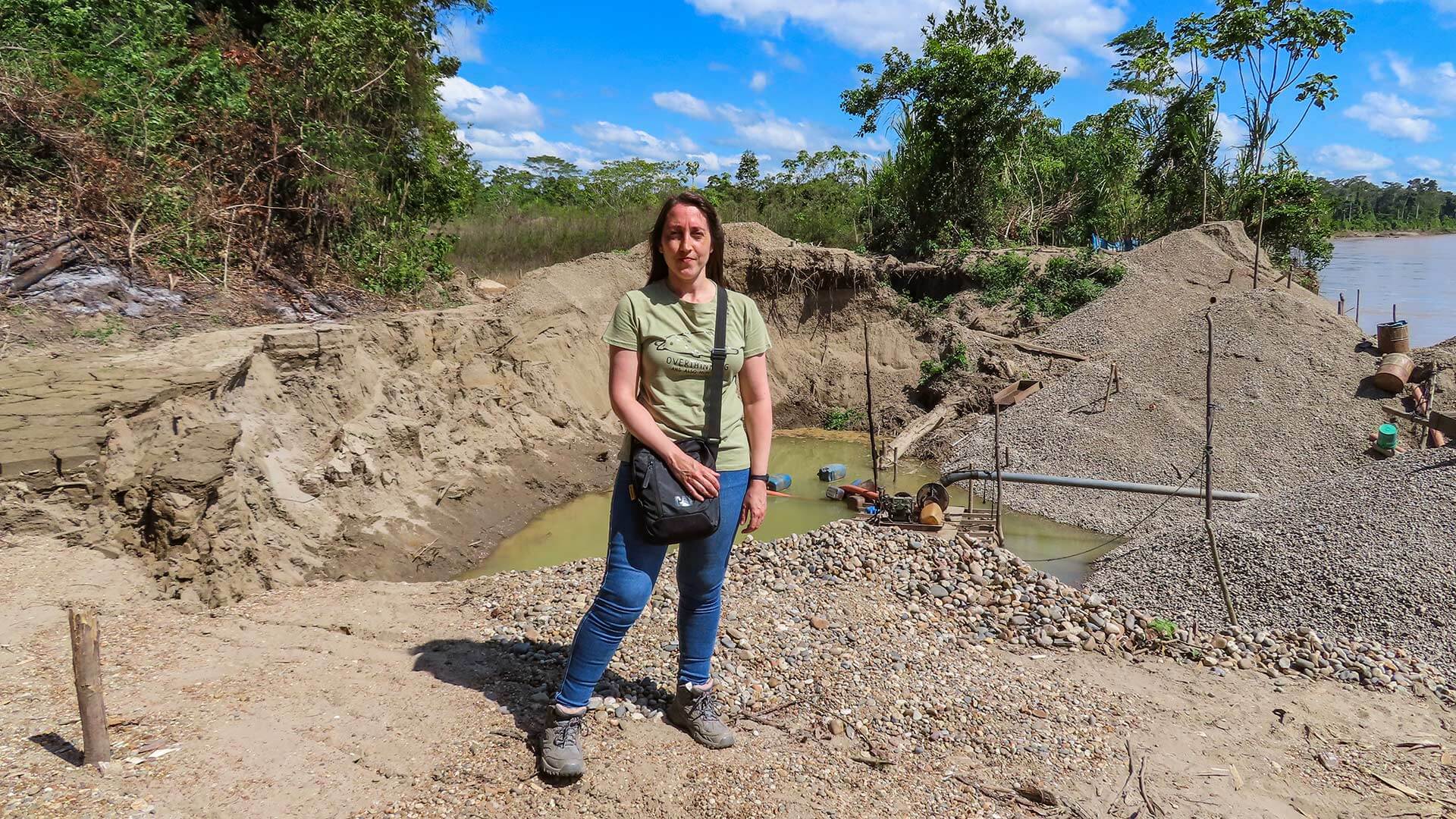- October 24, 2019
- By Dan Novak M.Jour. ’20
Catastrophic fires in the Amazon rainforest this summer drew global attention to land-use changes related to agriculture that are helping to devastate one of the world’s most diverse ecosystems.
But University of Maryland engineering researchers are focusing on another form of man-made deforestation that gets far less notice: gold mining.
In the Peruvian Amazon alone, illegal small-scale mining has contributed to the destruction of nearly 400 square miles of rainforest in the past 20 years.
Maria Rodriguez, a doctoral candidate in the Department of Civil and Environmental engineering, will work with the Peruvian government, local non-governmental organizations, and local communities to figure out how to help the forest heal.
“If you see the site, people compare it to Mars,” said Rodriguez, who was awarded an International Graduate Research Fellowship for a preassessment visit in Peru in summer 2019. “The area is completely dead.”
The primary contaminant from gold mining is mercury, which artisanal and small-scale miners use to separate the precious metal from ore. Releasing large amounts of mercury into the soil and atmosphere poisons the land, turning a once-lush landscape into a sand-covered desert. Gold mining is the world’s primary source of environmental mercury, a neurotoxin that causes developmental and other problems in people and animals.
Civil and environmental engineering Lecturer Natasha Andrade, one of Rodriguez’s faculty advisers, was struck by the silence of the dead rainforest when she joined her student in Peru.
“That was really amazing to me, because the forest is full of sound,” Andrade said. “There are no animals; there are no birds around. There is really nothing. It’s scary.”
Rodriguez’s research, the first of its kind, looks at best practices to repopulate the rainforest using indigenous plants and crops. She hopes to return to Peru for an entire year starting next summer to examine how varying levels of mercury affect plants at different stages of development, as well as contamination thresholds beyond which plants can’t remain healthy.
What also sets Rodriguez’s research apart, Andrade said, is her engagement with the local communities most impacted by the mining. Rodriguez will take into account their knowledge and perspectives, instead of trying to dictate outside solutions in a top-down manner.
“We should be asking the people that own the land, the indigenous local communities: What is it that you want planted here?” Andrade said. “What do you think is going to be most impactful to your communities? What are your needs?”
Outside the Amazon, there’s an equally important part of the equation of destruction, the researchers said. While the Peruvian military cracked down on illegal gold mining this year, the alluring metal continues to make its way to market in the United States and Europe.
“As a consumer you have to care about where the products you’re buying are coming from,” Rodriguez said.
Topics
Research